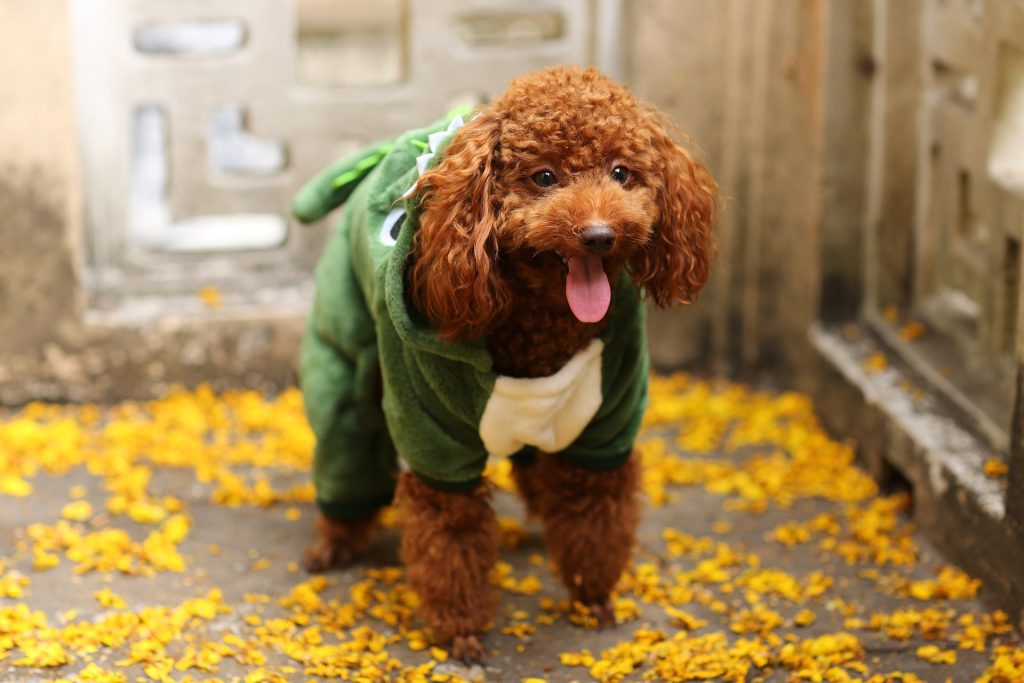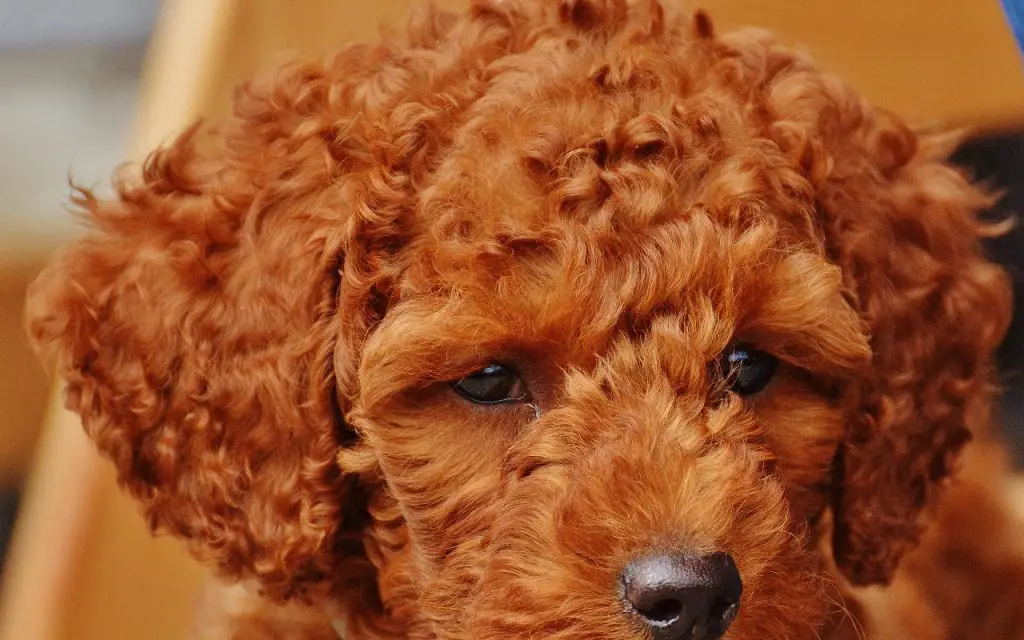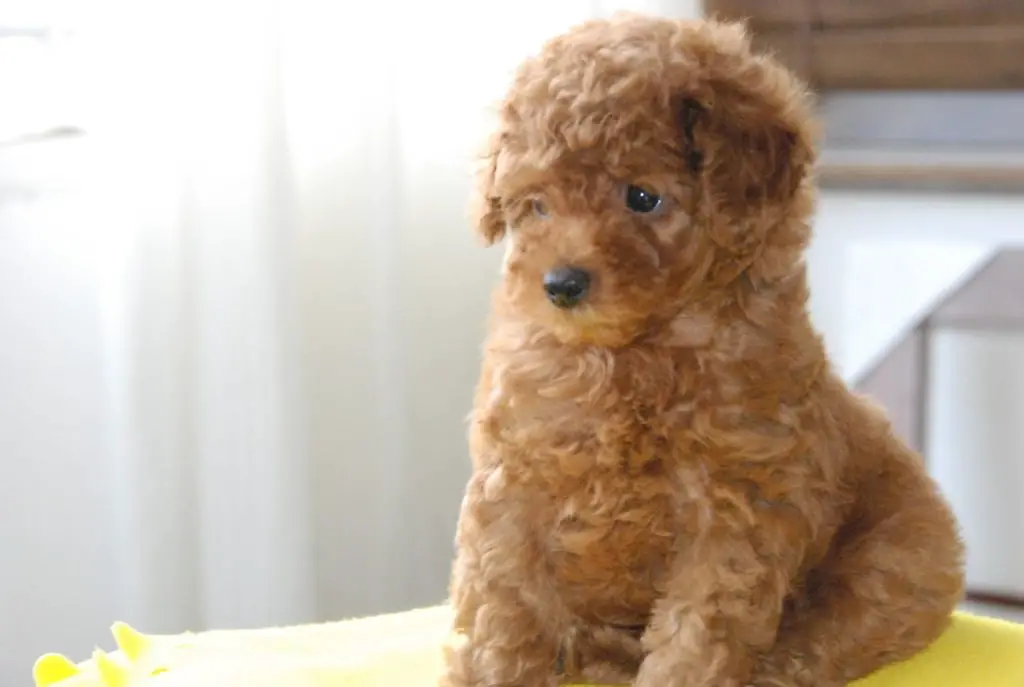Toy poodles are one of the most popular breeds of dogs in the world. They are known for their small size, intelligence, and adorable appearance. But how long can Toy Poodles hold their bladder?
In this blog post, we will discuss some fun facts and information about toy poodle bladders!
Key Takeaway
- Toy Poodles can generally hold their bladder for around 4-6 hours, but this can vary depending on the age and health of the dog.
- A healthy adult Toy Poodle typically needs to pee 3 to 5 times a day, although puppies and older dogs may need more frequent bathroom breaks.
- Toy Poodles may pee frequently due to their smaller bladders, but excessive peeing can also be a result of territorial marking, anxiety, illness, urinary incontinence, or the residual smell of urine in certain areas triggering the urge to re-mark.
How Long Can Toy Poodles Hold Their Bladder

Toy poodles can hold their bladder for up to four hours by age one. By age two, they can hold it for up to six hours. And by age three, they can hold it for up to eight hours. Of course, this is all contingent on how often they are given the opportunity to relieve themselves and if they have any medical conditions that affect urination.
Toy poodles are small dogs with big personalities. Though they may be little, they are very active and playful. As a result, they may need to relieve themselves more frequently than larger breeds.
Dogs mature at different rates, small breeds generally mature faster than large breeds. A Toy Poodle can be considered an adult at around one-year-old, whereas a Giant breed dog may not be fully matured until three years of age. This is important to keep in mind when housetraining your pup.
Puppies have small bladders and need to go out more frequently than adult dogs. A good rule of thumb is to take your puppy out every two hours, or as often as they eliminate.
As your Toy Poodle matures, they will be able to hold their bladder for longer periods of time. Adult Toy Poodles can typically hold their bladder for four to six hours.
However, this varies depending on the individual dog, and factors such as excitement or stress can cause your dog to need to eliminate more frequently. If you notice your dog squatting or sniffing around more often than usual, it’s best to take them out just in case.
How Often Does a Toy Poodle Need To Pee?

Toy Poodle puppies under three months old need to pee approximately ten times(every two to three hours). As they reach three to six months, their bladder capacity will increase and they can hold it for four to five hours.
By the time they’re fully grown at around one year old, most toy poodles can last up to eight hours without needing a potty break. However, some may still need to go more frequently, especially if they drink a lot of water or are very active.
If you notice your toy poodle trying to hold it in for longer than usual, it’s best to take them out for a walk or let them relieve themselves in an appropriate area.
Just like people, every dog is different and some may be able to hold their bladder for longer or shorter periods of time than others.
If you’re ever unsure, it’s always better to err on the side of caution and take your toy poodle out more often rather than risk them having an accident indoors. With a little bit of patience and training, you’ll soon figure out the perfect potty schedule for your furry friend.
If your Toy Poodle is going more than once every two hours or so, he may be going too often. If he’s having accidents in the house or seems to be straining to urinate, this could be a sign of a medical problem and you should talk to your vet right away.
There are a few things you can do to help your Toy Poodle hold his bladder longer. This includes feeding him smaller meals more often throughout the day and taking him out for regular potty breaks.
Why Do Toy Poodles Pee So Much?

Toy poodles have small bladders and can only hold their urine for a short period of time. This means that they need to go out more frequently than larger breeds of dogs.
While it may seem like your toy poodle is urinating more often than other dogs, they are actually just doing what comes naturally.
Some toy poodle owners try to keep their dogs indoors as much as possible to avoid accidents. But this isn’t always the best solution. Keeping your toy poodle cooped up inside all day can lead to behavioral problems and an overall unhappy dog.
The best way to deal with your toy poodle’s frequent urination is to take them out often and be patient. With a little time and patience, you will soon have a happy and healthy toy poodle that isn’t peeing all over the house!
In general, toy poodles can hold their bladders for four to six hours. This means that if you leave your dog at home for eight hours while you’re at work, he’ll likely need to relieve himself as soon as you get home. If you have a puppy, or your dog is small for his breed, he may need to go out more often.
If your dog starts having accidents in the house, it’s important to find out why and address the problem immediately.
Common causes of urinary incontinence in dogs include anxiety, excitement, and old age. If your dog is urinating due to excitement or anxiety, you’ll need to work on training and behavior modification. If your dog is incontinent due to old age, there are medications that can help says Poodle Club.
How Do I Stop My Poodle From Peeing in The House?
When it comes to potty training, every Toy Poodle is different. Some dogs take to it quickly and easily, while others may struggle a bit.
Regardless of your dog’s individual personality, there are some basic tips and tricks that can help make potty training successful. If your poodle is urinating in the house, there are a few things you can do to try and stop this behavior.
1. Be patient
The most important thing to remember when potty training your Toy Poodle is to be patient. Puppies in particular will need time to learn the ropes.
So, don’t get discouraged if there are a few accidents along the way. If they have an accident inside, be sure to clean the area thoroughly with an enzymatic cleaner to remove the scent and deter future accidents.
2. Establish a potty schedule
Start by establishing a regular potty schedule. If possible, take your Toy Poodle out to relieve himself at the same time each day. This will help him get into a potty routine and make it more likely that he’ll learn to hold it until his next scheduled trip outside.
Many people choose to paper train their dogs. This method is often used for puppies but can be used for adult dogs as well. The first step is to create a designated potty area. This can be done by spreading newspapers or training pads in an area that you want your dog to use as their bathroom.
Once you have created the potty area, take your dog there frequently, especially after they wake up, eat, or drink. Reward your dog each time they eliminate it in the designated area.
3. Choose a potty area
Choose a designated potty spot in your yard and stick with it. Toy Poodles are creatures of habit, so if you consistently take them to the same spot to do their business, they’ll be more likely to remember to go there when they need to go. Here is how to choose a designated potty area for your Toy Poodle:
1. Pick an area in your yard that is away from the house, has good drainage, and is in a spot that gets plenty of sun. You may also want to consider putting a fence around the designated potty area to keep your Toy Poodle contained.
2. Put some grass seed down in the designated area and water it regularly until the grass is fully grown. This will give your Toy Poodle a place to go to the bathroom that is comfortable and familiar.
3. Put a few toys or treats in the designated area to encourage your Toy Poodle to use it as their potty spot. You may also want to put a dog house in the designated area for your Toy Poodle to use as a refuge from the elements.
4. Be sure to clean up any feces in the designated area regularly to keep the area sanitary and inviting for your Toy Poodle.
4. Go out frequently
Make sure that your Toy Poodle has plenty of opportunities to relieve himself outside. If he does not have regular access to a yard or other outdoor space, take him for regular walks or let him out into the backyard frequently.
In general, you should take your pup out every one to two hours and five minutes after each meal. Of course, this will also depend on how much your puppy can hold it in between potty breaks.
If you are crate training, then you will need to take them out more frequently. Puppy pads can also be used in conjunction with going outdoors to help with the potty training process.
5. Reward, reward, reward
Reward your Toy Poodle for going potty in the designated spot. One of the most important things you can do to train your dog is to reward him or her when they behave as desired.
This positive reinforcement will help your dog understand what behaviors are expected of them; and will make them more likely to repeat these behaviors in the future. Rewarding your dog also helps create a bond between the two of you, and can make training sessions more enjoyable for both of you.
So, what kinds of rewards should you give your dog? It depends on what motivates your particular pup, but some common options include treats, petting, and praise.
You’ll want to experiment to see what works best for your dog, but remember that consistency is key. Always reward your dog for good behavior, so they know that they’re on the right track.
6. Don’t let accidents slide
The best way to punish a dog for peeing indoors is to provide them with strong negative reinforcement. It is important to catch the dog in the act so that they know why they are being punished. Consistency is key when punishing a dog so that they understand that their behavior is not acceptable.
If you catch your dog in the act of urinating indoors, interrupt him. Firmly say NO and immediately take him outside to finish going to the bathroom.
7. Rule out any medical conditions
If your dog is still having accidents indoors despite your best efforts, you may need to consult with a veterinarian or animal behaviorist. They will determine the underlying cause of the problem and find a solution that works for both you and your pet.
How Long Does It Take To Potty Train a Toy Poodle Puppy?
Toy poodles can be successfully potty trained in four to six weeks, although some puppies may take a bit longer. The key is to be consistent with your potty training efforts and to have patience while your puppy learns this important new skill.
There are several factors that can contribute to how quickly or slowly a toy poodle potty trains. Some of these include the age of the dog, how consistent the owner is with training, and how much exercise the dog gets.
Younger dogs tend to train more quickly than older dogs. Also, dogs who get plenty of exercise are typically easier to train than those who do not. Owners who are patient and consistent in their training will likely see better results than those who are not.
There are a few tips that may help to speed up the process for toy poodles. One thing to keep in mind is that puppies typically have a more difficult time holding their bladder than adult dogs.
You may also want to try taking your dog outside frequently – every 30 minutes or so – in order to encourage them to eliminate outdoors. If you catch your pup in the act of going potty outside, praise them enthusiastically and give them a treat as a reward.
Finally, make sure that you are providing your dog with plenty of water. Dehydration can make potty training more difficult. By following these tips, you can help to ensure that your toy poodle is successfully potty trained in no time.
Why is My Toy Poodle Peeing On My Bed?
A Toy Poodle could be peeing in your bed because it is marking his territory as dogs often urinate on objects or areas that they consider to be their territory. This is especially true when you have other pets in your household.
Another possibility why your Toy Poodle is peeing on your bed is simply to get your attention. Dogs sometimes pee in places where they know they’ll get a reaction from their owners, such as on the bed or in the living room. This can be a way of getting attention or seeking revenge if they feel they’re being ignored.
There could be a few reasons why your toy poodle is peeing on your bed. One reason may be that your dog is trying to tell you that he or she needs to go outside to pee. If you have been noticing that your dog has been going to the bathroom more frequently than usual, it may be time to take him or her outside more often.
Another possibility is that your toy poodle may be feeling anxious or stressed and is using the bed as a way to relieve that stress. If you have been recently adopting changes in your home such as getting a new pet or moving, your dog may be trying to tell you that he or she is not comfortable with the changes.
You can help ease your dog’s anxiety by providing them with plenty of toys and treats to keep them occupied, as well as plenty of space for them to roam around in. If you have already tried these things and your toy poodle is still peeing on the bed, it may be time to take him or her to the vet to rule out any medical problems.
FAQs
Q: What factors can affect a toy poodle’s ability to hold its bladder?
A: Various factors can affect a toy poodle’s ability to hold its bladder, including age, health conditions, bladder control training, and anxiety levels.
Q: How often should I take my toy poodle outside to relieve themselves?
A: It is generally recommended to take your toy poodle outside to relieve themselves every 4-6 hours, or more frequently if they are a young puppy or have a smaller bladder capacity.
Q: Can toy poodles be potty trained?
A: Yes, toy poodles are trainable and can be successfully potty trained. Consistent training, positive reinforcement, and establishing a routine are key to their successful potty training.
Q: Are there specific strategies for potty training toy poodles?
A: Yes, some effective strategies for potty training toy poodles include crate training, setting up a designated potty area, establishing a schedule, and rewarding them for good behavior.
Q: What are some signs that my toy poodle needs to go outside to relieve themselves?
A: Signs that your toy poodle needs to go outside include restlessness, pacing, sniffing the ground, whining, or scratching at the door.
Q: Can toy poodles develop bladder control issues?
A: Yes, toy poodles can develop bladder control issues, especially as they age. This can be due to medical conditions, such as urinary tract infections or bladder stones, or age-related muscle weakness.
Q: How can I help my toy poodle maintain good bladder control?
A: Providing regular opportunities for your toy poodle to go outside, keeping them hydrated but not overhydrated, and ensuring they have regular vet check-ups can help maintain good bladder control.
Q: Are there any specific health conditions that can impact a toy poodle’s bladder control?
A: Yes, certain health conditions, such as diabetes, kidney disease, or spinal issues, can impact a toy poodle’s bladder control. Regular vet check-ups can help identify and address any potential health concerns.
Q: Is it normal for toy poodles to have accidents even after being potty trained?
A: Yes, occasional accidents can happen even after a toy poodle has been potty trained. It is important to remain patient and continue reinforcing good potty training habits to minimize accidents.
Conclusion and final thoughts
In conclusion, toy poodles are known to be able to hold their bladder for several hours, depending on the age and size of the dog.
It is important to pay attention to signs of discomfort in your pet so you can take them outside when needed.
With regular bathroom breaks and adequate exercise, toy poodles should be able to maintain proper bladder control throughout their lives.




